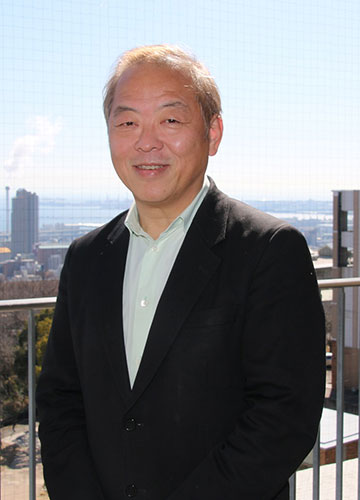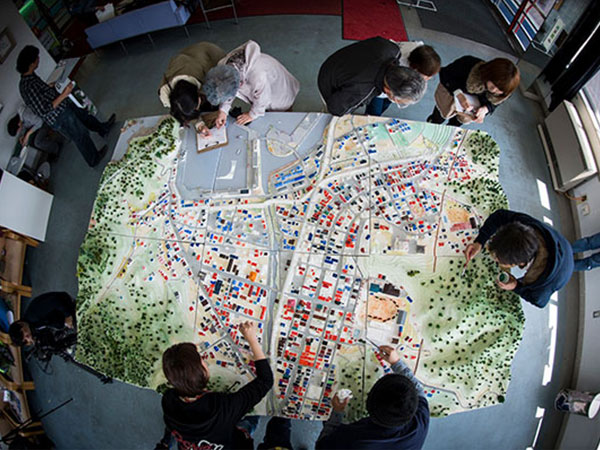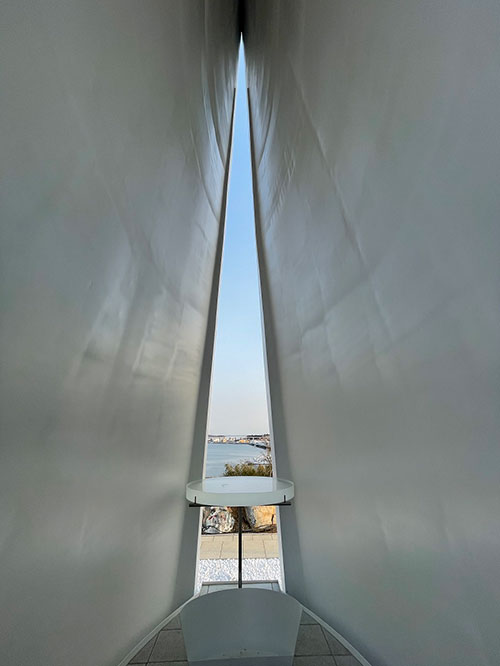
As a university that was directly affected by the 1995 Kobe Earthquake, there are many staff and students at Kobe University who have conducted activities and research to contribute towards disaster prevention and recovery. Before taking up his current position in Kobe University's Graduate School of Engineering, Professor TSUKIHASHI Osamu was a faculty member of a university in Sendai, Miyagi Prefecture. Immediately after the March 2011 Great East Japan Earthquake (commonly known as the Tohoku Earthquake and Tsunami outside of Japan), Professor Tsukihashi developed a project to bring survivors together and preserve their memories and affections for the region. For these efforts, he was awarded a prize from the Architectural Institute of Japan (AIJ), which is connected to his activities as an architect that emphasize the importance of placemaking. We interviewed Professor Tsukihashi about his activities in the disaster-hit region and his thoughts on being an architect.
Rekindling memories through models: The Lost Homes Project
Professor Tsukihashi:Before coming to Kobe University in 2011, I was a lecturer at the Tohoku Institute of Technology in Sendai. Just before the earthquake occurred, I was working with a company in Kesennuma (Miyagi Prefecture) on the production of sunshades for projectors due to be installed in a shopping street in the Sannomiya area of Kobe, so I strongly felt that "I must do something as someone who travel from Kobe to the disaster-hit region ". I thought about what I could do and what I had to do as a teacher of architectural design and as someone involved in architecture and town planning. But first I needed a reason to go to the disaster area with my students.
I was a graduate student at the University of Tokyo at the time of the 1995 Kobe, but I could not come up with a reason to go to the disaster area at the time because I was neither a person directly affected by it nor an expert. I have felt a sense of remorse akin to resignation. However, when the Great East Japan Earthquake occurred, I had a strong sense of being personally affected because I used to live in the disaster-struck region. I continued to hold meetings online with fellow architects from Japan and around the world. I was determined that education and culture should not be put on the back burner, but should be continued, even if in a small way. We also discussed how we could get the students of Kobe University involved. We wondered if we could focus on what the students are good at: making architectural models and listening to local people.
Professor Tsukihashi:I was worried about whether or not the people in the affected areas would understand our aims for the project. After seeking input from many people, we decided to first of all make a pure white model of the city of Kesennuma before the disaster. We made this model in Kobe and the students brought it to the affected region. This model attracted a lot of attention when it was placed in a corner of Kesennuma City Hall lobby, and an impromptu workshop was started where people discussed their memories of the town. Local press coverage highlighted the strong need for workshops where local people could trace, color and write their memories on these white models of the town's buildings. So far, models have been built and workshops have been held in over 60 locations.
Efforts to integrate the project in disaster-hit areas

Professor Tsukihashi:This is because the people in the affected areas want to 'remember'. They gather together to recall their memories of a fulfilling life alongside recollections of the townscapes, landscapes and spaces where they lived. I think that these townscapes and landscapes serve as hooks for recalling memories. When we hold workshops in front of the town models, people start talking about the townscape and their lives before the earthquake while they look at the models. They talk because they want to remember. The survivors living in temporary housing are facing daily difficulties, but workshop, they laugh and are animated. I think these workshops became more than just a way to document the situation; they also provided psychological support and cultural activities for the local residents.
Professor Tsukihashi:This was a project to relocate to the village to higher ground and revitalize the area. 141 of the 186 houses in the Osawa area were affected by the disaster. For 10 years, we helped the people of this area to return to and regenerate their community. Faculty members provided professional advice, while students stayed in the area for long periods of time, getting to know the local people and helping with residents' meetings. In addition to facing various issues involving housing, roads and farmland, the residents were dispersed into temporary housing and accommodations. To keep the residents informed about the reconstruction progress and issues in Osawa, the students published nearly 40 issues of a mini-commentary newspaper called 'Osawa Reconstruction News'. Thanks in part to their efforts, almost all of the households in the Osawa area that wanted to return immediately after the disaster have been able to return and rebuilt their lives (the return rate was 71%, which is higher than that of other areas).
Working with students to foster a sense of attachment to a place

Professor Tsukihashi:I developed a close relationship with Kesennuma through 'The Lost Homes' model restoration project and other projects. After discussions with students and members of the architectural office I lead, we took part in a competition to generate ideas for a memorial and reconstruction memorial park, and our proposal on the theme of 'attachment to a place' won first prize. The memorial is built on high ground in Kesennuma and has nameplates of approximately 1,300 victims of the earthquake arranged in a circle so that the deceased can be memorialized in a position where they are joining hands and facing towards the village where they lived. Memorial ceremonies can be held for all the citizens of Kesennuma and at the same time for the residents of each community. I believe that it is important for the architecture to foster a sense of comfort and attachment to the place, not only for the residents, but also for those who come to Kesennuma as volunteers.
Professor Tsukihashi:I think the local people were grateful for what we were working on. Students also realized that what they had learnt at university was actually useful. Through the model making efforts and listening to the local people, our expertise was appreciated by the locals, which made this a rewarding experience for our aspiring architects. My own involvement in the model project and reconstruction assistance confirmed the power of the concept of 'place'. It made me realize once again that how we deal with 'place' is extremely important for those working in architecture and urban development. In front of the model, a thousand people can talk about a thousand different memories. I realized that memory is an important element that breathes life into a town.






